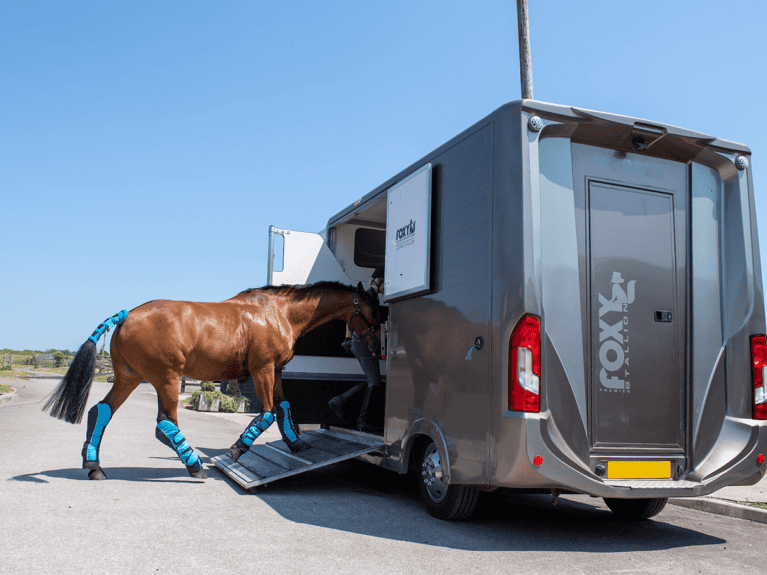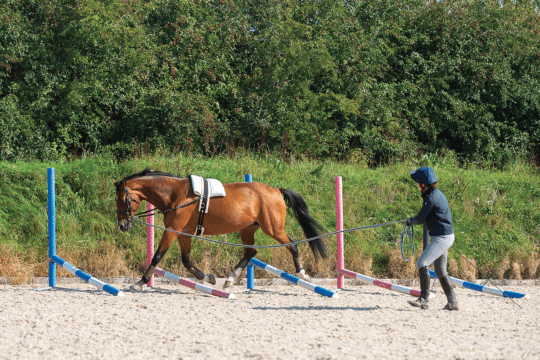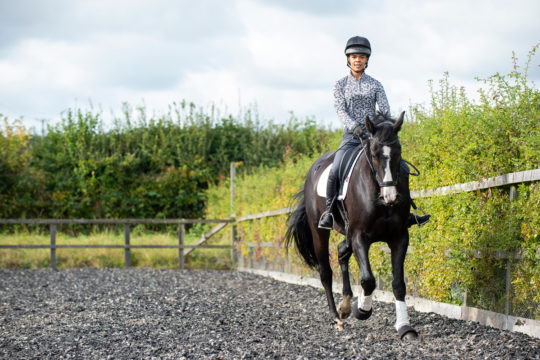In need of a loading refresher before you head out and about making the most of your season? Look no further than H&R’s comprehensive guide

It might have been a while since you loaded up and headed off the yard for a competition, hack with friends or arena hire – and your horse will likely be as rusty as you are after the break. So to get you back up to speed on best practice, we’ve put together a handy guide to safely loading your horse.
DID YOU KNOW?
There are now a variety of travel-safe, quick-release synthetic headcollars available, designed to break under pressure much like a leather headcollar.
Perfect prep
The key to a smooth getaway is plenty of practice and a thorough pre-travel routine. It’s no good making your horse’s first steps back on the trailer the morning of your premier outing since lockdown, as you’ll only set yourself up for disappointment when loading doesn’t go smoothly. Instead, take a little time to get back into the swing of things before booking arena hire or a lesson away from home. By squeezing in some practice beforehand, you’ll feel more confident that everything will go to plan when it comes to actually leaving the yard.
Set the stage
Ensuring your environment is safe and secure is paramount to creating the perfect set-up for easy and stress-free loading – with these tips in mind, you can start developing your loading routine.
Here’s a reminder of how to give yourself the best possible chance of success…
- ensure you’re loading in a secure area by closing any gates to the road or fields
- if possible, load at less busy times on the yard to avoid distractions
- get your trailer or horsebox organised before you start trying to load
- open any front windows or ramps to give your horse a clear line of sight through the trailer to encourage him
- have an extra pair of hands ready to help if you need it
- make sure any haynets are tied up ready to encourage your horse in
- if you’re likely to need some additional tools for persuasion, such as a lunge line or treats, have them within easy reach
- tie back any partitions to give yourself more space and to ensure they don’t swing back while you’re trying to load
- if you can, use the layout of the yard to help load your horse. For example, this might mean having the ramp of your lorry or trailer in a gateway to help funnel him in
- have an experienced horse on hand to load onto the lorry or trailer ahead of your horse to give him confidence
- make sure your kit is packed up before you start loading so you can hit the road as quickly as possible, avoiding your horse having to stand and potentially become stressed
TOP TIP
Make sure you’ve got appropriate insurance and breakdown cover to keep you safe on the roads when travelling your horse – a little extra peace of mind will go a long way.
Troubleshooting
Unfortunately, for many of us loading isn’t quite so simple. There are all sorts of reasons your horse might not load and finding the right solution to your particular problem can be tricky. While an equine behaviourist is recommended to help you get to the root of the problem, here a few tips to help you on your way to successful travelling if you need a short-term solution…
- planting Is there anything more frustrating than a horse who refuses to move? Make sure you produce that positive walk before approaching the lorry. Have a friend encourage him forwards from behind, too, but don’t be tempted to drag him as he’ll only resist more
- dodging the ramp Park with the ramp to your lorry or trailer in a gateway or opening between barns may help you funnel your horse straight up the ramp. A punchy walk and sticking next to your horse’s shoulder will help, as it’ll be harder for him to drift if you’re supporting him
- rearing Putting continued pressure on a horse who’s telling you no may result in rearing. This is a behaviour best addressed with the help of a qualified behaviourist to help you get to the bottom of it
- barging You might find your horse barges past you to avoid walking up the ramp. In this case instilling some manners will work wonders. Spend some time working in hand on the yard or in the school, walking him forwards, halting and turning. Use a wall or fence to help you stop to begin with, and use your body to help turn him when you ask. If he’s slow to respond to your forward aids, then carry a schooling whip to help direct his quarters and encourage him forward with your voice. Once he’s listening to you on the ground, you can reintroduce the ramp
TOP TIP
If you need a little extra control and security when loading your horse, put on his bridle over his headcollar. However, remember to remove the bridle before you start your journey.
A plan for all occasions
Setting up the ultimate pre-travel routine will be primarily down to your own personal preference and what works best for your horse – it’s unlikely that a one-size-fits-all approach will be effective. By treating your horse as an individual – and tailoring your plan to your kit, transport and yard set-up, your routine will prove far more useful than if you simply copy another livery or friend.
A good place to start when forming your plan is with a rough order in which you’d like to do your preparation – will you load the lorry the night before, or while your horse dries after his bath in the morning? Sketching out a rough idea of how you want to do things will lead you into a more detailed plan that includes a timeframe and more specific instructions, such as what kit you’ll need to bring and where you’ll place any loading aids – like treats – as well as where on the yard you’ll set up your transport.
Although producing a detailed plan of your routine is a helpful way to feel more confident about travelling, it’s important that you allow for some flexibility should things not go quite to plan. Work in some extra minutes throughout to give yourself breathing space, and try not to pack too much into a small window, because this will only contribute to your stress. Too rigid a schedule and you may be disappointed when you can’t follow it exactly.













